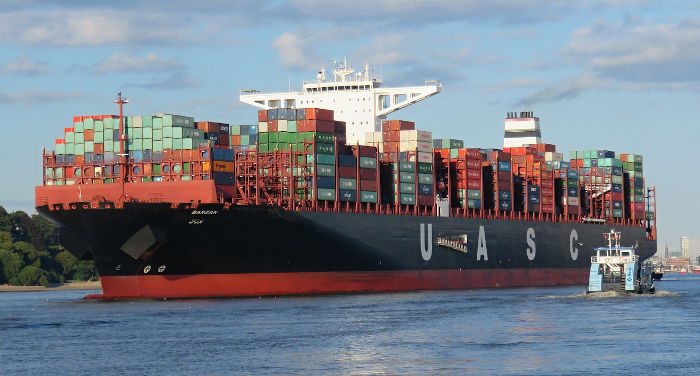
Economic Development in China and India -Index
While the average income in China and India remains low, their impressive economic growth and enormous populations have made them two world powers of extraordinary importance, whose economies are surpassed only by that of the United States. Therefore, even if a large slice of their population remains in poverty, the economies of China and India are completely integrated into the world markets and financial exchanges, making the development of these two key countries important to maintaining a peaceful international scene during the 21st Century.
Following the financial crisis of 2008 and the difficulty faced by the main world powers in maintaining sustainable economic growth, China and India are among the few economies to record a positive rate of growth. Many hope that a closer collaboration among these two colossi may lead the rest of the world to break the negative trend of the worldwide economy.
Nevertheless, when China and India are more closely and meticulously compared, the profound difference in development between the dragon and the elephant is immediately noticeable, with the former having a decisive advantage over the latter.
The situation in China
Since the beginning of the Chinese economic reform launched by Deng Xiaoping in 1978, China has passed from a closed, centralized economic system to a market economy. The reforms began with the dismantling of the communal systems in the countryside, moving on to the liberating of prices, to fiscal decentralization, to greater autonomy of state companies, to the development of the private sector, to the development of a financial market and to a modern banking system, up to the opening of business abroad and the Direct Foreign Investments (IDE).
In 2010 China became the largest exporter of essential goods and surpassed Japan in terms of gross internal production (PIL). The restructuring of the Chinese economy has increased the PIL tenfold since 1978. Measured in terms of buying power equivalent (PPA), in 2015 China became the largest economy in the world, passing the United States for the first time in history.
Nevertheless, the per capita income of Chinese residents remains below the world average. Moreover, the Chinese government has numerous difficult challenges to face, among which are:
- Reducing the enormous savings rate for families and promoting domestic consumption;
- Increasing work opportunities in sectors with high paying salaries and promoting the hiring of newly-graduated students;
- Reducing the level of corruption and other economic crimes;
- Reducing environmental pollution;
- Reversing the aging process of the population.
In response to these problems in 2015 the Chinese government, during the Thirteenth Five-Year Plan, emphasized the need for new and effective economic reforms to increase innovation and domestic consumption so that the Chinese economy is less dependent on fixed investments, exports, and heavy industry.
The situation in India
India is slowly becoming a market economy. In the Nineties, the government promoted economic freedom measures, such as the deregulation of the industrial sector, privatization of principal state agencies (SOEs), and reductions on controls on commerce and direct foreign investment. This politics allowed India to reach an annual growth of 7% per year from 1997 to 2011.
Almost half of the workforce is engaged in the agricultural sector, but the real backbone of Indian economic growth is in the service sector. In 2011, the Indian economy slowed due to high-interest rates, growing inflation and investors’ pessimism regarding the will of the central government to promote greater economic freedoms.
Nevertheless, starting in 2012, the Indian economy has recovered and grows thanks to government investments, measures introduced to reduce the deficit, and also thanks to greater participation on the part of foreign firms. The latest growth was in 2014 and 2015, during which period PIL growth equal to 7% was recorded. India, like China, has to face a series of challenges in order to maintain and sustain current economic growth, such as:
- Lowering the poverty rate;
- Curb endemic corruption;
- Eliminate violence and discrimination against women and children;
- Implement a more efficient distribution system throughout the territory;
- Promote intellectual property rights;
- Improve transport systems and infrastructure for agriculture;
- Create greater job opportunities in sectors other than agriculture;
- Control migration between the countryside and cities;
- Reform and improve the scholastic system.
Level of development in China and India
After having briefly discussed the principal historical factors that have brought China and India such exceptional economic growth, and having set out the challenges that the two countries must face in the future, the second part is dedicated to a deeper analysis on the different level of development of China and India so as to understand the reasons why the differences between the two countries are so large and unable to be remedied in a short period of time. We will analyze the PIL growth rate, the infrastructure, the level of foreign investments attracted (IDE), the total volume of imports and exports, as well as the national savings rate.
In the Fifties, the national economies of China and India were at the same level. The Indian economy during that same period recorded better performance both in terms of gross national product (PNL) and PNL per capita. Nevertheless, following the opening of foreign investments and the reforms promoted during the Seventies, the Chinese economy recorded enormous progress and has surpassed the Indian economy in every category.
These extraordinary results have been called the “Chinese Miracle”. The development of the manufacturing industry has transformed China into the “factory of the world” and has created an industrial substrate sustainable in the long term. In 2015 foreign investments (IDE) in China amounted to 1.723 trillion USD, while in India that number is decidedly less, equal to some 297.1 billion USD.
In addition, Chinese foreign investments have maintained constant growth: in 2015 it was equal to 1.1 trillion USD (in 2014 it was 792 billion USD). The Indian IDE were worth 129 billion USD in 2014 and reached the sum of 137 billion USD in 2015. Even Chinese foreign commerce has maintained a high growth rate, recording a positive balance of 700 billion USD; on the other hand, India recorded a negative commercial balance of 144 billion USD.
In terms of PIL, if China has recorded exceptional growth in the last ten years, only recently has it begun to slow, recording a general growth of 6.9% in 2015. Conversely India, with a PIL growth of 7.5% in 2015, has surpassed China in terms of speed of growth of its own economy.
In terms of national income per capita, China with 14.300 USD per citizen in 2015 completely blew India away, in which during that same period they registered an average of 6.300 USD a person.
In conclusion, as Martin Jacques said, even if the Indian economy were to grow faster than the Chinese, India would need an enormous period of time before reaching a level of development and complexity on the scale with the Chinese economy.
India’s economic growth began with its gaining independence from Great Britain in 1947, and has accelerated noticeably after the inauguration of political reforms promised by Nehru in the Eighties. The reforms concentrated on three main aspects: encouraging the importation of goods and products, a slight easing of control on the industry on the part of the state, and an initial reform on the system of taxation.
Moreover, Indian economical development was led by an active industry in the technological sector; having a poor infrastructure and without a trustworthy manufacturing sector, India has based its economic growth on its service industries. The percentage of its PIL occupied by the service sector in India is 54%, greater than China by 6%. The main reason why the service industry has had a better performance than the Chinese is found in state investments; in the Eighties, the government of Rajiv Gandhi openly declared that India would be led into the future through a technological revolution.
Lately, both China and India are facing the same difficulties in terms of economic growth, namely the impossibility to depend entirely on the industrial and service sectors. Both countries need to reduce their dependence on foreign commerce and promote a more far-reaching economy, extended into the highest number of sectors possible so as to avoid being trapped in the chain of international production. The Indian industrial sector is very weak and even if it had access to a numerous, young workforce, it would still be at a deficit of minimum education and training. In addition, even if the national savings rate is rather high, worth 29.3% of the PIL, the majority of savers could see their assets be used to repair the enormous public debt.
Many academics say that having a better financial system, the Indian economy will surpass the Chinese in the long term, but it’s also important to remember that the efficiency of the financial sector doesn’t translate into greater general economic efficiency. In fact, the economic growth of a country is considered efficient when it allows the majority of the population to see the benefits of development, more specifically, an economy is efficient when it promotes new jobs and a higher employment rate.
Presently, the Chinese unemployment rate is 4.7% of the population, while in India its 3.6%, but let’s not forget that the workforce in China is 800 million while in India it’s about 500 million. Also, following the expansion of the technological industry, there’s been the formation of “two Indias”: one in the north, poor and underdeveloped with a high unemployment rate; and one in the south, developed and built around Bangalore, where the economy is led by the technological, real estate and financial sectors.
We can find a similar situation in China, where the coastal areas have been the subject of massive investments to the detriment of the internal regions since the period of reforms in the Seventies. Still, the Chinese government has for some time begun investing massively to promote the development in interior areas through the construction of infrastructure, promoting urbanization and through the relocation of parts of the population into areas less densely populated.
Lastly, since economic development is a typically political process, the role the government plays is fundamental in providing sustainable development. An analysis of the growth of the Indian economy since its independence shows how the poor administrative ability of the Indian government has been a key factor in the slowing of the socio-economic development of the country.
India enjoys an advantage compared to China in terms of economic reliability and fairness, as well a greater efficiency in fighting corruption and an administration that observes the laws. However, when taking into account indications of government efficiency and quality of legislation, China has better results than India. The Chinese government is extremely competent in directing resources and reaching agreements, allowing it to promote an effective and efficient socio-economic development.
Frequently asked questions
- Manufacturing
- Mining
- Energy
- Agricultural industries
Conclusion
In conclusion, even if the Indian PIL growth is faster than the Chinese, the Indian economy and its process of development are far from passing their Chinese counterparts. Indian development is constantly slowed by insufficient infrastructure, stagnation of the agricultural sector, internal conflicts, social instability, and political division at the heart of the government.
On the other hand, the main role of the Chinese government is to avoid the “trap of median income”, better the quality of economic growth, promote greater scientific development, and increase the efficiency of the economy in general.
One last difference between the development models of China and India is that whereas the former has based its growth on labor-intensive sectors, the latter tends to promote sectors with high levels of competency.
Both countries should concentrate on the importation of advanced technologies and managerial experience, and eventually reduce their dependency on foreign investments and promote internal growth based on domestic consumption and government investments.
Bibliography
- Dougherty S. & Valli V., “Comparing China and India: an Introduction”, The European Journal of Comparative Economics, Vol. 6 (1);
- Jacques, M. 2010 When China Rules the World, Penguin Books; 2nd edition (August 28, 2012);
- Lin, Y, and Zhou, W., eds. 2011. BRICS’s Development Report. Social Sciences Academic Press;
- Zhou, W. 2014 “Comparing the Economic Growth of China and India”, World Review of Political Economy.




Thank you for posting your article. The Western world needs to embrace the concept of increased understanding & knowledge of the economic workings of these two giants.
: )